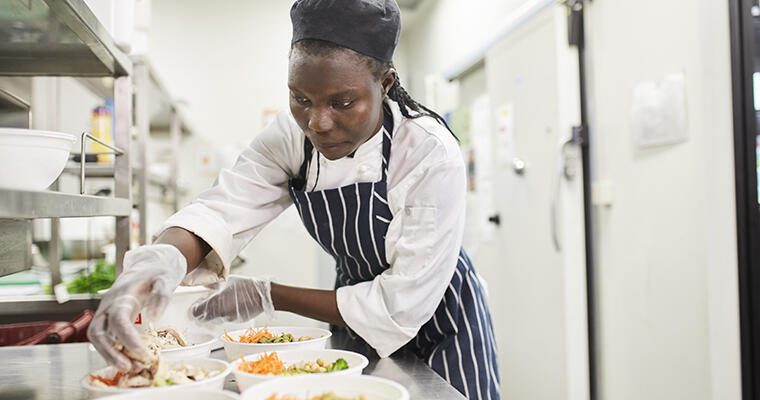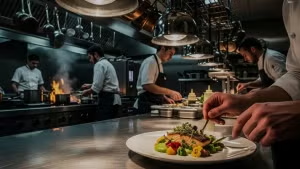Ghost kitchens. Dark kitchens. Cloud kitchens. Virtual restaurants. No matter what you call them, they’re a hot topic for off-premise dining, and recently, they’ve gained more attention. Ghost kitchens, operations configured as delivery or pickup only, have seen growth in recent years as a way to eliminate front-of-house expenses.
This has spurred some operators to explore continuing as a ghost kitchen or partnering with a third-party company. Participants in a recent Technomic Inc. webinar asked former Kitchen United CEO Jim Collins how ghost kitchens work. Here is a summary of his conversation:
What’s the model for a ghost kitchen?
In the beginning, cheap real estate in an industrial park was popular. Experience has shown that a 7,000 to 10,000-square-foot place close to where people are walking around, visiting and working makes sense. A typical design contains eight to 12 individual kitchens, so each restaurant has its own space.
What services does a ghost kitchen provide?
The people who do the cooking are restaurant employees. The ghost kitchen manager opens the building, makes sure deliveries go to the right kitchen, runs the “pickup center” where payments are processed and a delivery driver or customer collects the order. They also can work with various distributors on orders to help our restaurants get their food costs down.
What does it cost?
Some restaurants pay a fixed fee and some pay a percentage of revenue. The cost is similar to renting a very small restaurant in the neighborhood. Most restaurants operate between 40-60% of their general revenue in a ghost kitchen, but they do it using only 25% of their typical staff.
What kind of brands benefit most from a ghost kitchen?
Most ghost kitchens are quick-serve or fast-casual. The secret sauce for success is to have a vibrant digital connection with your customers. Restaurants that do really well are active on social media and have really powerful marketing messaging on their website. It takes a micro approach — what really matters is the delivery radius right around the ghost kitchen.
Will full-service restaurants expand into ghost kitchens?
Before 2020, fine dining wasn’t embracing off-premise, but many had to pivot during the pandemic to stay open. Part of their appeal is the dining-room experience, and that should return over time. They still can succeed in off-premise if they have a customer connection and a menu that makes sense for delivery and pickup.
How do ghost kitchens handle alcohol?
Local alcohol control authorities are just now trying to figure it out. Liquor licenses are often granted on a one-per-address basis, and most ghost kitchens have a single address. Will operators be able to use a suite number for each kitchen to sell alcohol? It’s unclear and is something restaurants should ask about.
What types of menus have been most successful?
Cuisine popular in the surrounding area is most likely to succeed. But the operator’s commitment matters. If Mexican food, Asian food or chicken wings are in high demand, that doesn’t guarantee sales success. You can’t forget: This is food, and it has to taste good.











